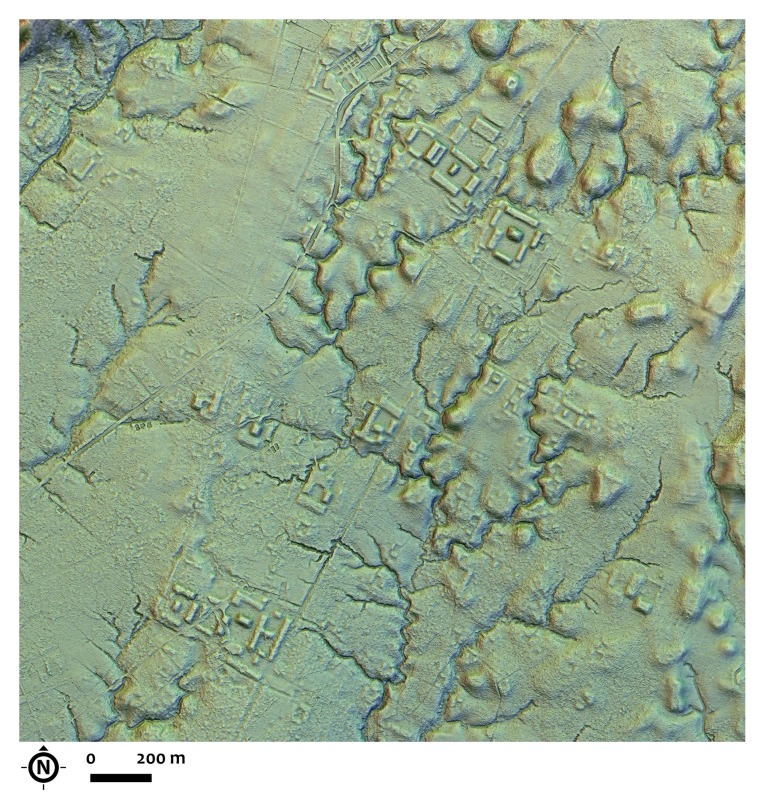The Amazon rainforest has always been a place of mystery and wonder, hiding its secrets within its dense foliage. Now, archaeologists have uncovered a cluster of “lost cities” that thrived for a millennium in this captivating region. Published in the journal Science, these findings have shed light on an ancient civilization as intricate as the Mayans.
A Revelation from Lidar Technology
Over 20 years ago, archaeologist Stéphen Rostain first noticed traces of these cities while working at The French National Centre for Scientific Research (CNRS). However, due to the vastness of the area, Rostain did not have a complete overview. Fast forward to today, and new laser mapping technology called lidar has unravelled the secrets hidden beneath the forest cover. It revealed over 6000 earthen platforms intricately connected by roads, forming a geometric pattern that encompassed the settlements of Ecuador’s Upano Valley. These cities formed the backbone of an agrarian civilization in the eastern foothills of the Andes, defying previous beliefs about the Amazon’s capacity to support complex civilizations.
Lost Valleys of Cities
The sheer scale of this discovery is awe-inspiring. The team of researchers, led by Rostain, found five large settlements and ten smaller ones across a vast area of 116 square miles. These cities rival some of the most iconic archaeological sites, with one settlement alone occupying an area as large as Egypt’s Giza Plateau or the main avenue of Teotihuacan in Mexico. The Upano Valley’s landscape, designed with precision, evoked the concept of “garden cities” seen in Mayan civilizations, with houses enveloped by fertile farmland to sustain the population.

Image: The settlements in Upano Valley, Ecuador, showcasing an urban area with rectangular platforms arranged along a main street. (Photo: Antoine Dorison, Stéphen Rostai / AP)
The Upano Civilization
The cities of Upano were constructed and inhabited by the Upano people from approximately 500 B.C. to between 300 A.D. and 600 A.D. The exact population size remains undetermined, but the magnitude of their presence cannot be ignored. These ancient metropolises were the result of complex planning and organization, boasting residential and ceremonial structures that reflected the sophistication of the Upano civilization.
Unveiling the Amazon’s Secrets
The discovery of the Upano sites is just the beginning of a grand archaeological journey in the Ecuadorian Amazon. Co-author Fernando Mejía, an archaeologist at the Pontifical Catholic University of Ecuador, believes this discovery is merely the tip of the iceberg. Previously, the Amazon was deemed inhospitable for complex civilizations, reserved only for hunter-gatherer societies. However, recent findings have challenged this notion, with traces of human settlements ranging from Bolivia to Brazil. These findings, coupled with the newly mapped Upano cities, have enhanced our understanding of the Amazon’s rich history.
A Diverse Amazonia
As our understanding deepens, it becomes increasingly clear that the Amazon was home to a diverse array of cultures and settlements. Rostain emphasizes the importance of recognizing the ancient cultural diversity of the region. “We say ‘Amazonia,’ but we should say ‘Amazonias,'” he asserts. The journey of unraveling the mysteries of this captivating region is ongoing, with each new discovery revealing more about the varied ways of life that once existed in the Amazon.
To learn more about this fascinating discovery, visit F5mag.com.
Source: Lost Cities: Oldest Ancient Complex Found in the Amazon Thrived for 1000 Years

This subject sounds a little hurried-you are often very detailed with your musings.